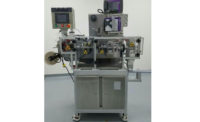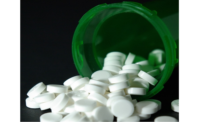HCPC Column
Unit Dose Packaging Gains Support
Unit Dose Packaging Gains Support Yet Leaves Package Open to Interpretation

Anyone associated with pharmaceuticals and packaging is likely aware President Trump signed the SUPPORT Act recently. The Substance Use–Disorder Prevention that Promotes Opioid Recovery and Treatment for Patients and Communities Act, also known as SUPPORT for Patients and Communities Act, includes a specific address to the type of packaging that should be utilized to stem the tide on opioid addiction.
Section 3032 (a) (4) (A) the drug be made available for dispensing to certain patients in unit dose packaging, packaging that provides a set duration, or another packaging system that the Secretary determines may mitigate such serious risk; … 1
At first glance we all can say, “Finally some action on Opioids!” but does it really go far enough? From a packaging perspective, those of us who have fought for improved safety via packaging are thrilled with the language but also cautious that the actual implementation will fall short.
One reason for concern is that the specification for “unit dose packaging or packaging that provides a set duration” will run into the same challenges that the industry has experienced when seeking unit dose packaging for prescriptions. Most notably it would be the requirements of the Poison Prevention Packaging Act, which are absolutely necessary but haven’t had any significant revision since the PPPA’s 1970 inception.
Why should this matter? When PPPA was written, blisters were in their infancy. The protocol for testing was predicated on the dominant packages of the time, bottles and hospital unit dose blisters. These 1970 package styles led to different testing criteria and protocols that put higher hurdles in place for blister packaging. I’m sure at the time it made sense — blisters were rather simple, so putting a numerical dose figure in place to protect children seemed logical. The problem is that the protocol also included a phrase that was a game changer for anyone trying to decide between bottles and blisters:
§ 1700.20 Testing procedure for special packaging.
(a) Test protocols -
(2) Child test -
(ii) Test failures.A test failure shall be any child who opens the special packaging or gains access to its contents. In the case of unit packaging, however, a test failure shall be any child who opens or gains access to the number of individual units which constitute the amount that may produce serious personal injury or serious illness, or a child who opens or gains access to more than 8 individual units, whichever number is lower, during the full 10 minutes of testing.2
With this phrase, the PPPA puts the onus for determining what a toxic drug dose is only on those companies that select unit dose packaging. If you are in a bottle, a failure is a failure. Maybe this is irrelevant now because with opioids I am sure we would all agree that one dose is too much for any child to ingest. If this is the case, then why would we consider any bottle at all?
A cap failure or, more importantly, the failure of a patient to properly replace the cap and re-engage the child-resistant feature results in full access to total container contents. Regarding opioids, this has disaster written all over it.
This is why the wording of the legislation is concerning. Right behind “unit dose” it says “or packaging that provides a set duration.” Well, this can be a unit of use container with a set number of doses, which accomplishes nothing in terms of improved child safety.
Why would we address a Class II drug regarding patient safety and addiction and not consider improved safety for children? Certainly we can provide both, a decrease in potentially addictive doses provided in a blister to protect the patient that has CR features to protect our children. To further the point, why can’t we work to impose this same requirement on all CIIs, i.e., drugs that have a high potential for abuse that also pose high risk to our children. F-1 blisters for potentially toxic products like these make sense. The HCPC sincerely hopes SUPPORT is just the first step that can lead to updated PPPA testing protocol which, in turn, inspires Class II packaging designs that improve patient safety for everyone regardless of age.
- https://www.congress.gov/bill/115th-congress/house-bill/6
- https://www.gpo.gov/fdsys/granule/CFR-2012-title16-vol2/CFR-2012-title16-vol2-sec1700-20/content-detail.html
Learn more about HCPC at hcponline.org.
Looking for a reprint of this article?
From high-res PDFs to custom plaques, order your copy today!






